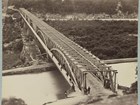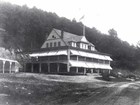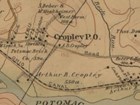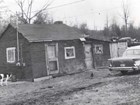Learn more about five historic African American communities that greatly influenced areas along the C&O Canal and their imprints still visible on the landscape today. These communities formed during the Reconstruction Era as families began building new lives for themselves post-emancipation. While many of these communities no longer exist, their stories illustrate the impact of African American history along the canal.
-
Article 1: St. Phillips Hill (the Palisades), NW DC

The African American community of St. Phillips Hill, in what is now the Palisades area of Washington DC, was established during the Reconstruction Era along Chain Bridge Road and the C&O Canal. While the historic community no longer exists, St. Phillips Hill was the home to over 100 African American families during its prime. Learn more about community of St. Phillips Hill and the legacy they left behind. Read more
-
Chesapeake & Ohio Canal National Historical Park
Article 2: Rock Spring (Glen Echo Heights), Maryland

The historic community of Rock Spring, in what is now Glen Echo Heights, Maryland, was a small African American community founded in the late 1800s. Black recreation and tourism became of growing importance as people settled along the C&O Canal and many of Rock Spring’s community members worked for a local hotel that hosted some of Washington, D.C.’s Black elite and Black politicians. Learn about the people and businesses of Rock Spring and how urban development affected them Read more
-
Chesapeake & Ohio Canal National Historical Park
Article 3: Gibson Grove (Cabin John), Maryland
Gibson Grove is a historical African American community, located in Cabin John, Maryland, and was established in the 1880s. Named for the African American Gibson family who relocated there after the Civil War, the community was home to ten core families, a church, and an African American school. Learn more about the lives and work of the Gibson Grove residents and how the community endured well into the twentieth century. Read more
-
Chesapeake & Ohio Canal National Historical Park
Article 4: Brickyard, Cropley (Carderock), Maryland

Established in the 1880s, the historic African American community of Brickyard, also called Cropley, was a little-known community located where Carderock, Maryland is today. Brickyard soon became a home for aqueduct and railroad laborers and thrived into the 1920s. It wasn’t until 1928 that the racially restrictive Carderock subdivision pushed out many Brickyard residents. Learn more about the community of Brickyard, and what remains today. Read more
-
Chesapeake & Ohio Canal National Historical Park
Article 5: Tobytown (near Travilah), Maryland
Tobytown is a historic African American community located along the C&O Canal in Travilah, Maryland. Founded in the 1870s, Tobytown grew to be a prosperous community, with agricultural lands, church, school, and successful businesses. “Urban renewal” efforts by Montgomery County officials from the 1940s through the 1970s encroached on Tobytown and dispossessed its residents. Learn about Tobytown, its residents, and how they found success prior to the community’s demise. Read more


